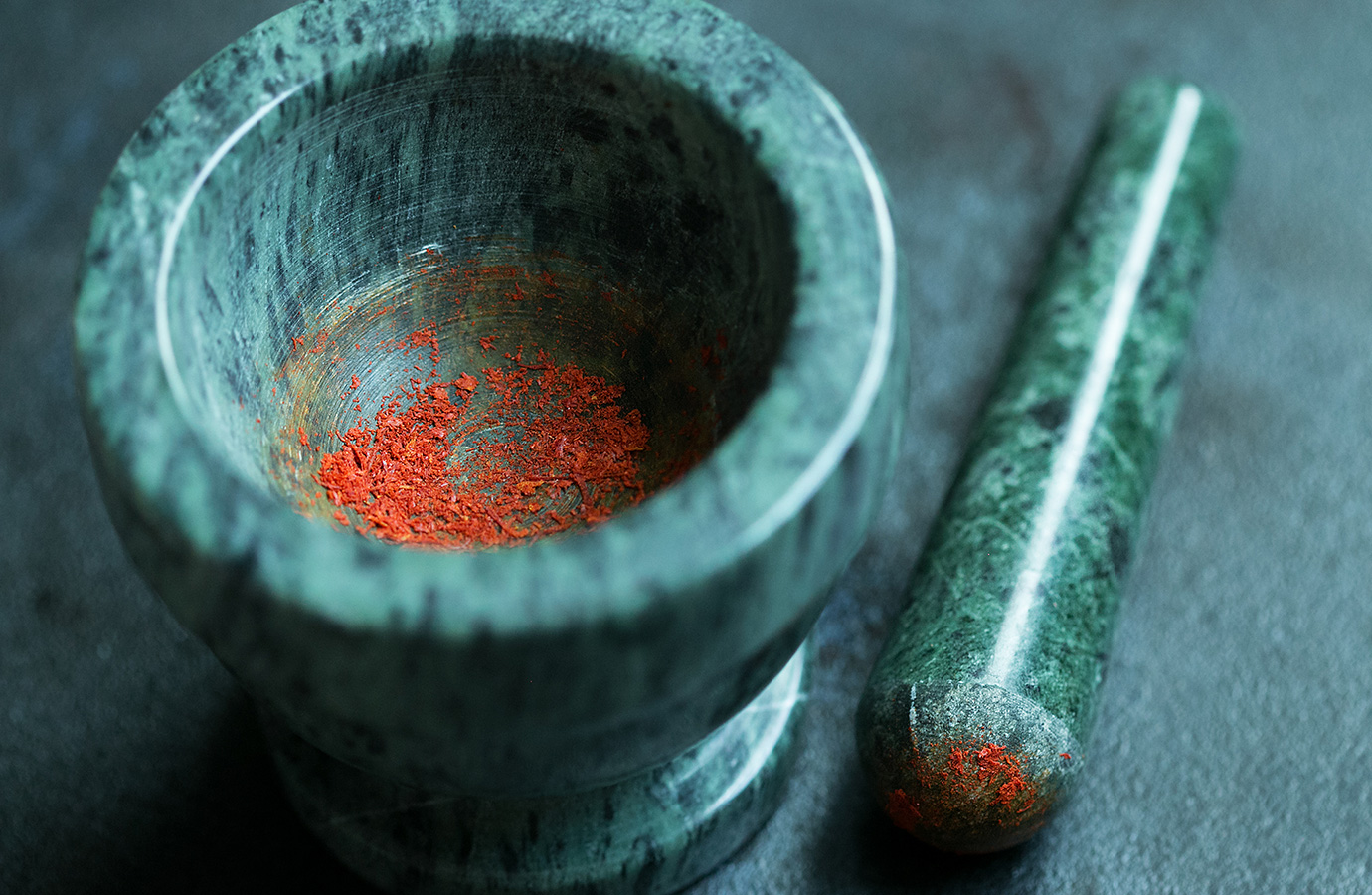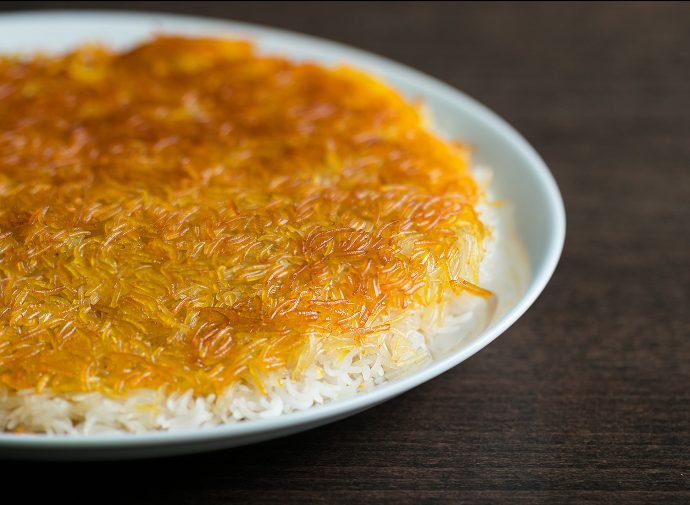Recipe taught to me by Zak Yasin
There is no single word in English for that almost universally beloved component of a rice dish—the nutty, golden, shatteringly crisp crust at the bottom of the pot. Every rice-loving culture around the world has its own nickname for those deliciously crispy bits. This issue of the Gazette highlights just two: tahdig, savored in Iran, and socarrat, enjoyed in Spanish paella dishes.
Tahdig is the delicious golden saffron crust found at the bottom of the pot once the rice has been removed. It is served on a separate serving platter, and is often offered first to the guest of honor at the meal.
Ingredients
3 c Basmati rice
¼ tsp saffron threads, ground using a mortar and pestle
3 Tbs neutral oil
1 Tbs butter, melted
Salt
Optional: 1 lb Yukon gold potatoes
Instructions
Wash the rice under room temperature water several times, until the surface starch has been removed and the water runs clear. Add a teaspoon of salt and allow the rice to soak for 2 hours.
Fill a large 6 qt non-stick pot with at least 8 cups water. Add enough salt to make the water salty [6-8 Tbs]. Don’t worry, the water and most of the salt will be discarded. Cover the pot and bring the salted water to a boil over a high heat. Reserve a quarter cup of the water.
Pulverize the saffron with a mortar and pestle. Add the reserved water to the ground saffron threads. Make sure to immerse all of the precious spice, and allow it to steep.

Drain off the rice-soaking water. Uncover the lid from the pot and carefully add the strained rice to the boiling salted water. Cook over high heat for 5 minutes, gently stirring a few times with a wooden spoon. The rice is ready when it is “al-dente.” In other words, it will retain a slight “bite” when you taste a grain. Strain the rice. Run cold water over the grains to stop the cooking process.
Set the same non-stick pot over medium-high heat back on the stove. Once heated, add the oil. Slowly add the saffron water and allow it to cook, moving it around the bottom of the pot.
Begin to add the par-boiled rice back into the pot. Add a layer of rice about an inch deep, and, using an offset spatula, gently, but firmly, press the rice down. This is critical in order for the tahdig to form properly, and come out later in one piece.
Add the remaining rice, lightly creating a dome or cone shape, no higher than 1 inch from the top of the pot. DO NOT pat down the remaining rice when forming this dome. Using the handle end of the wooden spoon, poke 5 holes into the rice mound [be careful to stop 1 inch away from the bottom so as not to disturb the layer that will form the crust].
Using a kitchen towel, wrap the lid of the pot, bringing the corners of the towel to meet at the lid’s handle. The towel aids in absorbing the steam, keeping condensed water on the lid away from the rice. Place the towel-covered lid over the pot and reduce the heat to medium. Continue cooking for 5 minutes and then decrease the heat to medium-low for 45 minutes. DO NOT check the rice by uncovering the lid!
(The devil is in the details! Zak, like his mother, gives very strict instructions.)
Turn off the heat and allow the rice to rest for 5 minutes. Gently scoop out the majority of the rice onto a serving platter, careful not to disturb the final 1-inch layer of crust on the bottom of the pan. Drizzle the rice on the platter with the melted butter and serve hot.
To remove the tahdig, gently flip the pot upside down onto a large plate. Serve separately. The tahdig is traditionally presented to an honored guest.
Once you’ve mastered this recipe, you may want to venture further and also use potato. This is a delicious addition that is very reminiscent of the tahdig that I looked forward to eating when I was a child. You add 1/4” thin slices of Yukon Gold potato to the base of the pot, prior to adding any of the parboiled rice. Just soak the slices in water until ready to use and pat them dry with a kitchen towel before adding them to the pot. Then continue with the tahdig instructions.


In the above recipe –which looks SO delicious — there is a detail missing: the number of minutes to continue cooking the rice once the toweled lid is in place. Here’s the phrasing from the recipe:
“Place the towel-covered lid over the pot and reduce the heat to medium. Continue cooking for DO NOT check the rice by uncovering the lid!”
Thank you so much Sandra for pointing this out! I will fix it right away. Cheers, Lisa